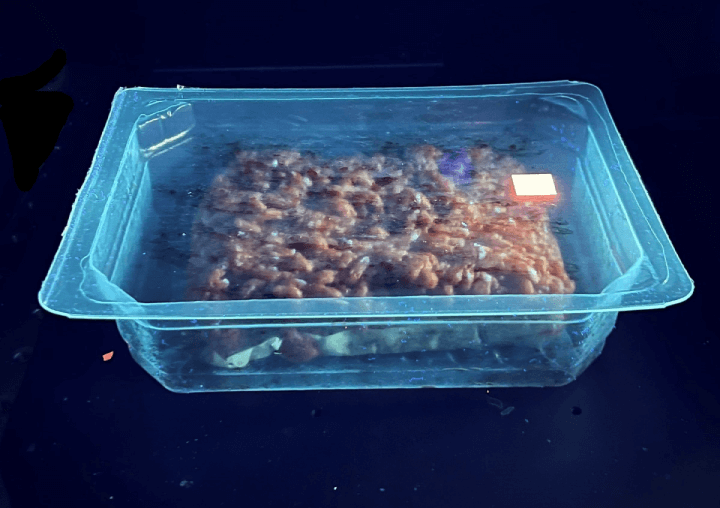Printable Sensors: The Cutting-Edge Technology Detecting Food Spoilage
Insights | 19-06-2023 | By Robin Mitchell
Recently, Senoptica Technologies announced the development of a printable sensor that can be used in food packaging to determine if food has started to expire. What challenges does food expiration present, what did Senoptica Technologies develop, and how can it help reduce food waste?
What challenges do food expiration and food waste present?
In all of human history, food has never been more abundant. Thanks to modern agriculture practices, research, and technological advancements, farmers are able to produce untold quantities of food. In fact, food abundance is critical for a society to develop, as having an abundance of food allows for more people to spend time working on non-agricultural activities, including science, engineering, medicine, and entertainment. In fact, it was an abundance of food production during the late 18th century that helped spark the industrial revolution during the Victorian era.
Fast forward to 2023, and food has become so abundant that it is very easily thrown away with little regard. Of course, as children, we are taught that food waste is bad as there are others around the world who starve, but this argument is invalid as reducing food waste locally doesn’t result in starving individuals around the world from receiving food.

However, wasting food certainly come with some consequences. One such result of food waste is the increased use of fertilisers on fields as farmers try to meet demand (if food waste is reduced, then there is less pressure to manufacture food). Another result of food waste is that the need for more land can see vast amounts of natural habitats and forests decimated.
According to a report by the Food and Agriculture Organization of the United Nations, approximately one-third of all food produced globally is wasted. This not only represents a significant economic loss but also contributes to greenhouse gas emissions. Technologies like Senoptica's sensor have the potential to significantly reduce food waste, contributing to environmental sustainability and economic efficiency. This statistic is supported by numerous studies and reports. For instance, a study published in the journal 'Science of the Total Environment' found that food waste contributes to over 8% of global greenhouse gas emissions. By reducing food waste, technologies like Senoptica's sensor can play a crucial role in mitigating climate change.
Reducing food waste can be done in several ways, but one method that seems to have become popular is eliminating dates on product packaging. According to food manufacturers, many commonly sold foods, such as milk and eggs, don’t especially need a use-by date and can instead have their freshness determined by smell and taste.
Now, while this may work in principle, there is a negative consequence to eliminating the use by dates. Firstly, those who eat food that is old and potentially dangerous could sue the manufacturer as there may be no visual indication of when the food was manufactured and how it was stored. Secondly, those who follow the use-by dates may decide to throw food away earlier, either because they had forgotten when the food was purchased or out of fear of eating something rancid.
As such, trying to eliminate use by dates in an effort to reduce food waste may end up backfiring, resulting in even more food waste.
Senoptica Technologies develops food-safe sensor
Recently, Senoptica Technologies, a spin-off company from a research group in Trinity College, Dublin, has developed a new sensor that can be incorporated into food packaging and give consumers an idea if the contents have started to spoil. The goal of the new device is to try and reduce food waste by half by 2030, specifically targeting fresh produce such as vegetables, eggs, and milk.
In a statement about the company's mission, Brendan Rice, CEO & co-founder of Senoptica, said, 'The climate emergency needs technologies like ours to get to market as quickly as possible to mitigate the effects of climate change. We are excited to be playing our part in solving one of the greatest challenges facing the world today.' This commitment to environmental sustainability underscores the potential impact of Senoptica's sensor technology.
The sensor itself has been designed from a food-safe printable ink so that it doesn’t contaminate the contents of packaging and relies on the use of protective atmospheres (such as pure nitrogen or a nitrogen/carbon dioxide mix). As food that spoils releases oxygen, the sensor looks for traces of increasing oxygen levels, and the sensor is able to provide real-time measurement.
The sensor's operation is based on a simple yet effective principle. As food spoils, it releases oxygen. The sensor, made from food-safe ink, is designed to detect these increasing oxygen levels. The sensor's readings can be accessed with a handheld device, which interprets the colour changes in the sensor to determine the oxygen content. This real-time monitoring of oxygen levels provides an accurate indication of the food's freshness, helping to prevent premature disposal.
It's worth noting that the development of such a sensor is a significant achievement in the field of food safety. The sensor's design and functionality are the results of extensive research and testing, demonstrating Senoptica's expertise in this area. The sensor's ability to provide real-time measurements of oxygen levels is particularly noteworthy, as this feature sets it apart from other food safety solutions on the market.

The sensor is printed directly onto the lidding film, scanned for quality assurance, and the packs are accepted or rejected based on product specifications. The sensor allows for condition checks at any point in the supply chain using handheld devices, enabling retailers to conduct spot checks and strategically price down products. This technology aims to increase retailer revenue, reduce food waste, and improve consumer satisfaction.
Senoptica Technologies has already had its food sensors independently tested for food safety and is now piloting its technology with a world-renowned global retailer and large European food company (however, it is not clear which company this is). Furthermore, it is not clear exactly how this sensor is powered, whether it is via a small cell or wirelessly done via NFC.
Scaling up this technology for widespread use presents its own set of challenges. These include ensuring consistent sensor performance across different food products and packaging types, as well as integrating the sensor technology with existing food packaging processes. However, Senoptica is already making strides in this area. As Brendan Rice, CEO & co-founder of Senoptica stated in a recent interview:
“We are delighted to make this first close on our €1.5m bridging round, particularly given the difficult funding environment at present. This funding will enable us to complete the final hard yards of our pre-revenue journey and help us get to first sales. The climate emergency needs technologies like ours to get to market as quickly as possible to mitigate the effects of climate change. We are excited to be playing our part in solving one of the greatest challenges facing the world today.” - ” Brendan Rice, CEO & co-founder of Senoptica.
How can such sensors help reduce food waste?
Having sensors integrated into food packaging will undoubtedly help to reduce food waste thanks to the ability to scientifically verify if food has spoiled or not. If consumers can utilise NFC with a smartphone to wirelessly power sensors during a shop, it allows for safer food choices and ensures that consumers only pick the freshest produce. Furthermore, if the sensor provides an accurate read of the oxygen concentration, then shops will be able to recognise which products are going to expire first and provide consumers with discounts on those items.
However, these sensors will also be able to mitigate against potential food poisoning from packaging whose protective environment has been damaged. For example, meat is one product that can become extremely dangerous if not stored correctly, and even a tiny pin-hole rupture in the protective packaging can result in spoiling well before the expiration date. As such, the sensor developed by Senoptica Technologies could prevent such incidences.
While the potential benefits of Senoptica's sensor technology are clear, it's also important to consider potential limitations and criticisms. For example, the success of this technology relies on consumers' willingness to use and trust the sensor readings. Additionally, while the sensor is designed to be food-safe, ongoing testing and monitoring will be crucial to ensure its safety. Despite these challenges, the potential of Senoptica's sensor technology to reduce food waste and improve food safety is undeniable.
It's important to note that while this article aims to provide accurate and up-to-date information, the field of food safety technology is rapidly evolving. Therefore, readers are encouraged to seek out additional sources and stay informed about the latest developments. As always, the goal is to provide reliable information that readers can trust and use to make informed decisions.

